Benefits Of Hatha Yoga You Need To Know About
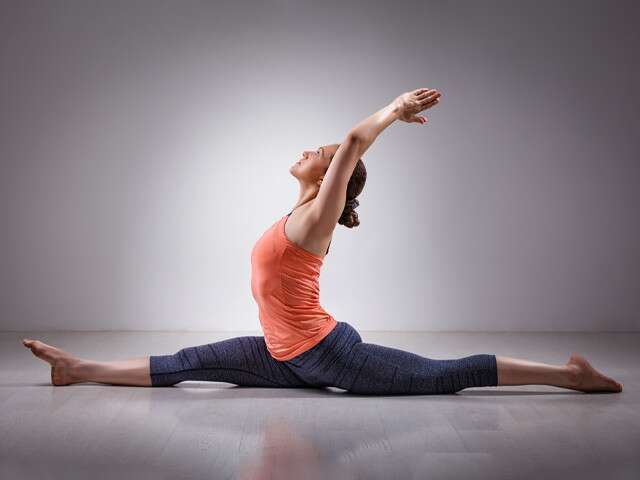
What Is Hatha Yoga?
Hatha yoga is a type of yoga practise. Hatha is a Sanskrit word that means ‘force’ and refers to a set of physical techniques. Hatha yoga is related to the Yogis of the Natha Sampradaya and is part of popular culture in India according to its traditional founder Matsyendranath, who is revered as a saint in both Hindu and Buddhist tantric and Hatha yoga traditions.
Hatha Yoga is based on a thorough study of the body’s mechanics, and it incorporates yogic postures, or yogasanas, to help the system maintain higher energy dimensions. One may modify and improve their way of thinking, feeling, and experiencing life by practicing this fundamental science.
How Is Hatha Yoga Different From Other Forms Of Yoga?
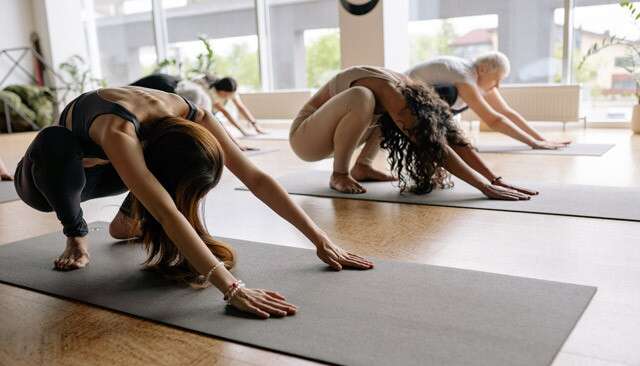
Hatha yoga is said to be good for harmonising the body and mind. The sun is represented by the letter ‘ha,’ and the moon is represented by the letter ‘tha,’ therefore it implies uniting and balancing the energy of the sun and moon. Asanas, pranayama, mantras, mudras and visualisation are some of the physical techniques. Poses in Hatha yoga are maintained for five or more breaths, to establish the breath while remaining in a position.
This yoga is a seven-fold yoga that helps in cleansing, improving, and regulating the body, relaxing the mind, freeing yourself, and achieving inner peace and radiance, according to a yoga scripture published in Sanskrit, the Gheranda Samhita.
Hatha yoga incorporates a healthy diet for detoxifying the body, asanas for toning the body, and meditation for clearing the mind, so it’s a good choice if you want to lose weight and tone your body.
TIP: Take a beginner’s class initially, regardless of whatever yoga form you choose.
Hatha Yoga For Beginners
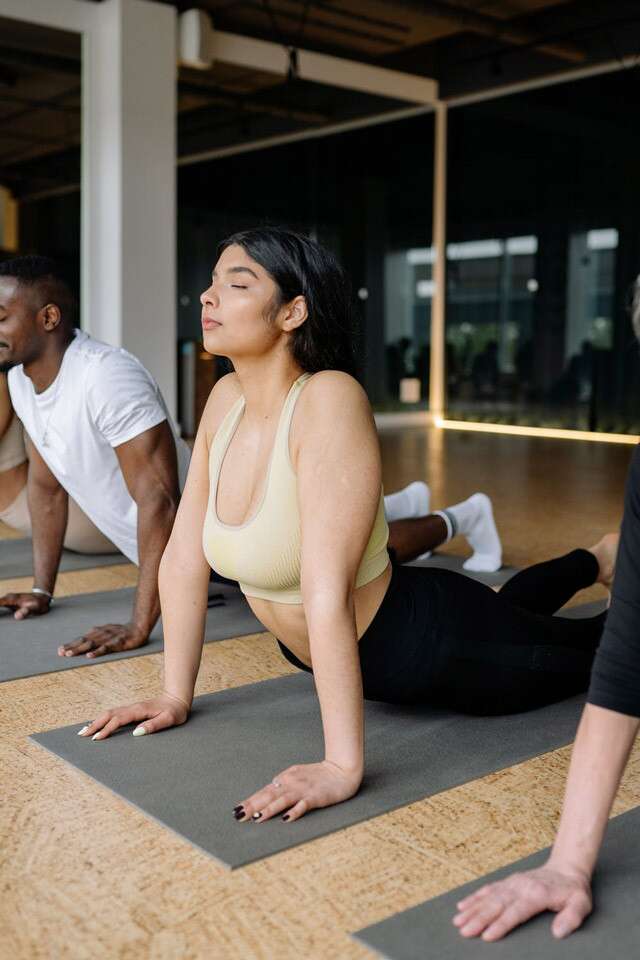
Maybe yoga is just what you need to feel great! Hatha Yoga is known to be quite friendly for beginners so this is a good place to start your yoga journey. The advantages of Hatha yoga for your body and mind are quite significant, and you will notice them as soon as you begin practicing it.
Here are a few poses for beginners to get a feel of Hatha yoga. Remember to maintain each pose for at least four to five breaths!
Child’s Pose (Balasana)
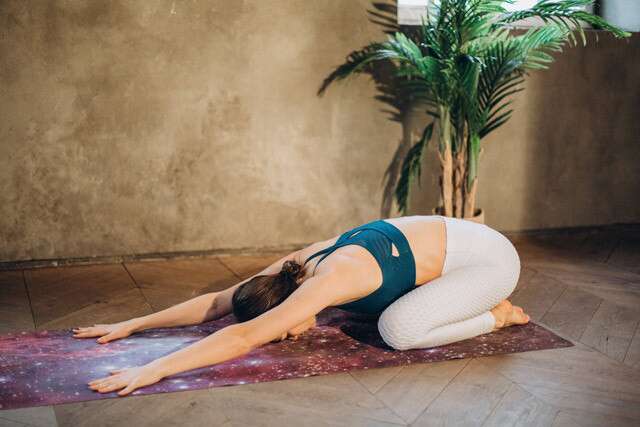
This is a perfect position to start your practice and a nice way to relax whenever you need to breathe and calm yourself.
Sit on your knees together in the center of your mat.
Spread your knees as wide as the width of the mat.
Keep your heels apart but your big toes touching. Stretch your arms forward until your forehead and arms are resting on the mat.
Rest your elbows on the mat and lower your shoulders away from your ears. Maintain a comfortable posture and feel your sides stretch as you lower your hips down toward your heels.
Close your eyes and take a few deep breaths.
TIP: For extra space and support, place a pillow under your torso.
Mountain Pose (Tadasana)
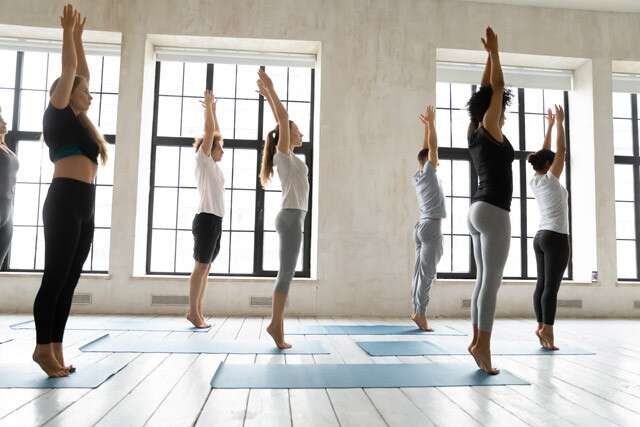
Mountain Pose builds your legs and aligns your body, while also increasing your posture and body awareness.
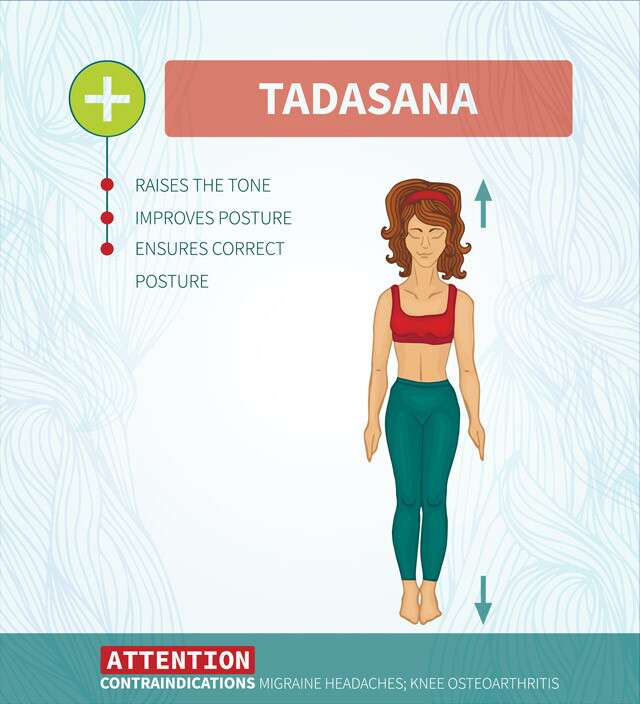
With your feet spread hip-width apart and toes pointed forward, stand on the mat.
Your toes and heels should be firmly planted on the ground.
Straighten your knees and squeeze your thigh muscles to engage them.
Maintain an open and raised chest.
Your shoulders should be relaxed and away from your ears.
With your palms facing front, rest your arms along your body.
Hold the back of your neck long by lowering your chin slightly to your chest.
Take five deep breaths and maintain a calm focus.
TIP: Unless you’re faint or lightheaded, this is a typically safe stance. If pregnant, a wider posture may be required to feel balanced.
Standing Forward Fold (Uttanasana)
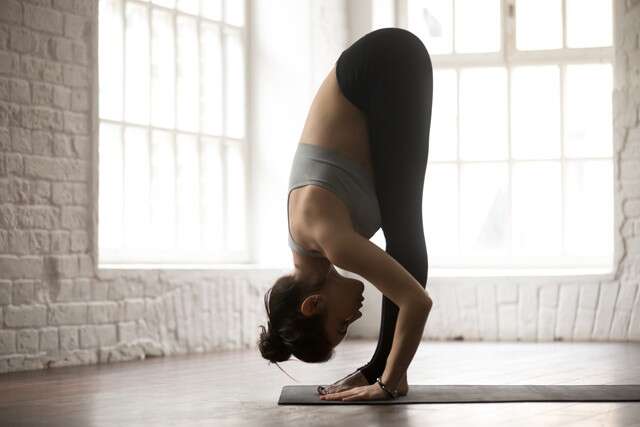
Standing Forward Fold is a fantastic posture for stretching your hamstrings and extending your spine.
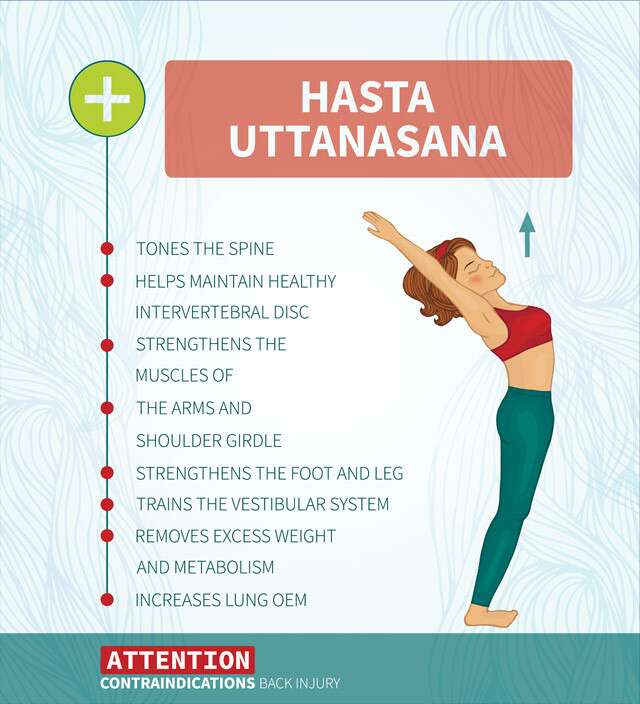
Stand on tour mat. Make sure your toes are pointed forward and your feet are hip-width apart.
Draw your belly button in and bend your knees if necessary.
Inhale before you bend forward and make your stomach touch your thighs as you exhale.
Grab your big toes and hold firmly or hold the back of your calves.
Push your weight onto the balls of your feet and use your thigh muscles to activate your legs.
Pull your big toes gently, stretch your spine, and maintain your legs firm for 5 breaths.
TIP: If your hamstrings are tense, place yoga blocks under your hands for support or bend your knees more.
Classical Hatha Yoga
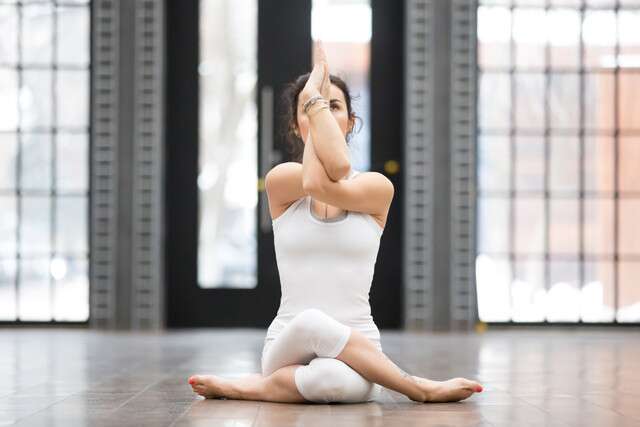
Image: Shutterstock
Classical Hatha yoga is an essential tool for personal development and overall well-being. Yoga is a Sanskrit term that signifies ‘union’. It is not a drill or a routine. It’s a certain manner of being. Upa-Yoga, Surya Kriya, Yogasanas, Angamardana, Surya Shakti and Bhuta Shuddhi are some of the components of the same.
Classical Hatha yoga embraces far more than the well-known yoga asanas. The value of mental qualities such as courage, enthusiasm, resolve, and patience is described in Hatha yoga scriptures. They also stress the need for a healthy lifestyle, a balanced diet, and moral and ethical behavior.
Hatha yoga focuses on developing a body that isn’t a hindrance in your life. The body is transformed into a building block on the path to realising one’s full potential.
TIP: Include breathing techniques into your Hatha practice to help you add meditation into the yoga position.
Health Benefits Of Hatha Yoga

1. The key benefit of Hatha yoga is that it helps us lose weight while also keeping our blood pressure in check, which maintains our heart health. It relieves the symptoms of a heart attack and reduces the chances of heart disease.
TIP: Breathe regularly, slowly and steadily while doing asanas. The aim is to relax the body by stretching it and also providing it with enough oxygen.
2. Hatha yoga strengthens the bones. It is vital to put in consistent effort to see the improvement. It also stretches and lengthens your muscles, allowing you to move more freely. You’ll be amazed to discover that you’re getting better at specific yoga positions and stretching to places you couldn’t previously.
TIP: If you’ve undergone bone surgery, it is not recommended to practise Hatha Yoga unless advised by a doctor.
3. Our resistive capability improves when we practice Hatha yoga. It boosts your immune system and enhances the circulation of blood and oxygen to the brain, as it includes stress-relieving positions.
TIP: If this is your first time doing Hatha Yoga, you should get guidance from a qualified guru.
[……]
